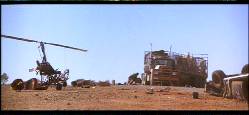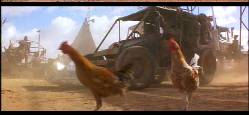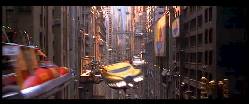 |
Context
 It is clear we should stop the destruction of the ecological systems
and the exhaustion of the (natural) sources we have left. Therefore
we need to develop systems that can facilitate our consumption
patterns (needs) in a sustainable way, or change our lifestyle
to prehistoric standards. A reduction of our life standards is
unlikely to be accepted, so we might want to focus on the first
option first. This implies we need to concentrate on the use of
It is clear we should stop the destruction of the ecological systems
and the exhaustion of the (natural) sources we have left. Therefore
we need to develop systems that can facilitate our consumption
patterns (needs) in a sustainable way, or change our lifestyle
to prehistoric standards. A reduction of our life standards is
unlikely to be accepted, so we might want to focus on the first
option first. This implies we need to concentrate on the use of
 renewable
sources (solar, wind and gravity power) but also on minimizing
the use of non-renewable sources and optimizing the efficiency
of the used sources (intelligent design and use of sources, recycling).
In a lot of ways sustainability is associated with extra costs,
beards, rejection of luxury and denial of nowadays standards.
We believe that intelligent and innovative approaches make it
unnecessary to downgrade our lifestyles. However, attention is
needed to show not only the inevitability but also the benefits
and possibilities of sustainability, in order to get the acceptance
and understanding of the greater public (marketing!). renewable
sources (solar, wind and gravity power) but also on minimizing
the use of non-renewable sources and optimizing the efficiency
of the used sources (intelligent design and use of sources, recycling).
In a lot of ways sustainability is associated with extra costs,
beards, rejection of luxury and denial of nowadays standards.
We believe that intelligent and innovative approaches make it
unnecessary to downgrade our lifestyles. However, attention is
needed to show not only the inevitability but also the benefits
and possibilities of sustainability, in order to get the acceptance
and understanding of the greater public (marketing!).
Our workshop is based on the above stated philosophy.
The themes this workshop deals with are:
· recycling (re-use of materials, renewable
sources)
· energy: (alternative sources, efficiency based)
· the role of mobility (alternative transportation systems)
· intelligent design (lightweight, efficiency based)
· the image of sustainability (bigger and better, no
beard required)
· the sustainable features of hovercrafts in relation
to conventional boats
Aim
 Mobility
plays an important role in nowadays life, and it is not likely
we give up our needs in this. We have to develop means of transportation
that will be sustainable in accordance with the above stated
philosophy. As EASA takes place on Friland, a peninsula in a
country that mainly consist of islands we chose to work on transportation
over water. Mobility
plays an important role in nowadays life, and it is not likely
we give up our needs in this. We have to develop means of transportation
that will be sustainable in accordance with the above stated
philosophy. As EASA takes place on Friland, a peninsula in a
country that mainly consist of islands we chose to work on transportation
over water.
From the perspective of energy efficiency hovercrafts are providing
us with an alternative for transportation by boat. Hovercrafts
are much more energy efficient means for transportation over
water. The idea is that we build a hovercraft that will be big
enough to carry approximately two persons, and that we have
it fully operating within the available two weeks that EASA
lasts. To keep the budget down and the environment clean, we
use the scrapheap concept as main source for materials. The
hovercraft will be constructed from recycled materials and wood.
The hovercraft will be powered by a engine that is as small
as possible, or if feasible, (also) by manpower. The hovercraft
is seen as a metaphor for the contrast between nowadays typical
life and the sustainable questions we are faced with.
|
|
|